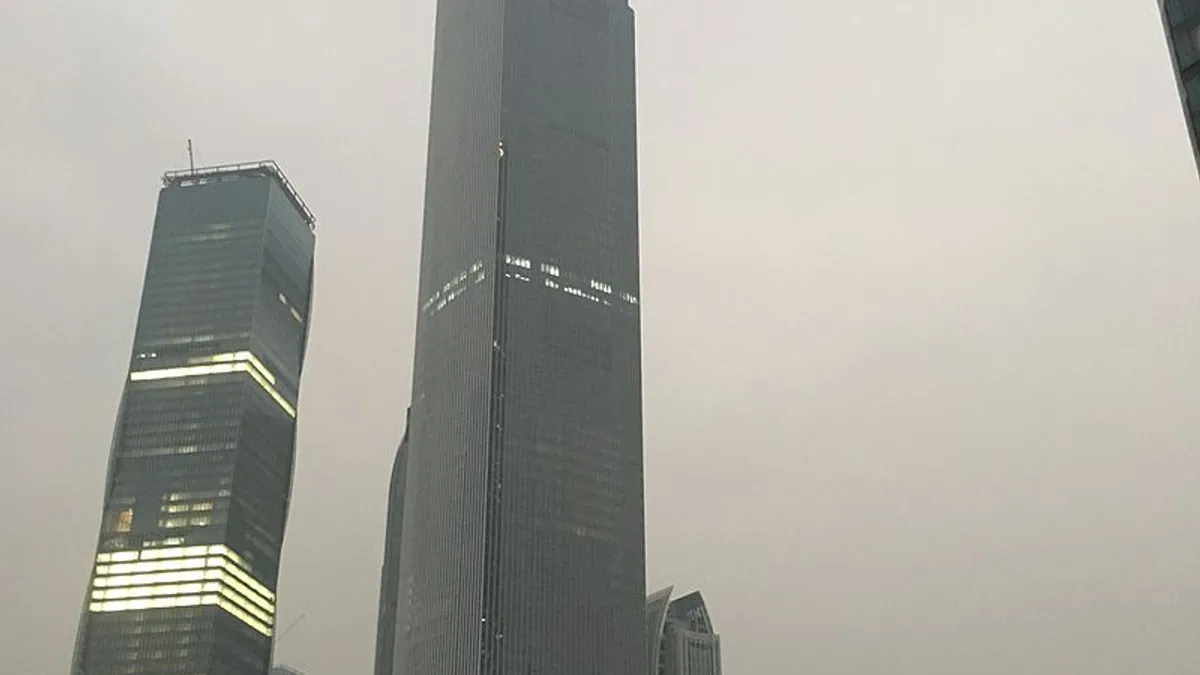Dive Brief:
- Completion of the terracotta-clad Guangzhou CTF Finance Centre shuffled the ranking of the world’s supertall skyscrapers. Topping out at 1,739 feet, the tower is the 4th tallest building in the world and second tallest in China, after the Shanghai Tower.
- The building features several public metro stations, heat recovery stations, and 95 Hitachi elevators capable of reaching speeds of 44.7 mph, according to New Atlas.
- Terracotta cladding offers a historical link to Chinese architecture, is corrosion resistant and provides improved thermal performance when compared to the ubiquitous glass curtain wall.
Dive Insight:
Designers strive to connect buildings to their region’s culture and design history, and the Kohn Pedersen Fox team delivered with a bold nod to the Imperial motifs of the Forbidden City, not to mention the 8,000-soldier-strong terra cotta army of Qin Shi Huang’s tomb.
KPF’s culturally rooted design continues a narrative of Asian supertalls departing from monolithic, curtain-walled skyscrapers to incorporate geohistorical elements into the architecture. Dubai’s Burj Khalifa cues into the Islamic design aesthetic of buildings like the Great Mosque of Samarra, while China’s Taipei 101 is intended to represent a fusion between technology and the Asian architectural canon (and is designed to be resilient against typhoons and earthquakes).
Interest in building a completely wood-framed 80 story tower in London, as well as KPF’s own blue sky design for a mile-high supertall in Tokyo Bay are additional signals that a new scraper era is dawning, in a form of resilience via design in and of itself.













